“Gardens are never innocent.” Architectural historian Beatriz Colomina noted in the catalogue for Renate Bertlmann’s Austrian Pavilion at the 58th edition of the Venice Biennale of Arts. “Formal gardens are classically the very image of femininity, controlled. Liquid, organic, interactive – biologically tamed by geometry and highly choreographed movements.” On the contrary for Bertlmann’s glass sculptural installation: “the garden grid of knife-roses puts this logic on steroids and cannily subverts it. Nothing is tamed here.”
The dramatic field of knife roses was first shown at the Austrian Pavilion at the Venice Biennale under the title Discordo Ergo Sum [I dissent, therefore I am]. The title worked as a play on the traditional philosophical principle cogito, ergo sum [I think, therefore I am] as well as a switch from the artist’s programmatic axiom, Amo Ergo Sum [I love therefore I am]. It’s a change that echoes much of Bertlmann’s oeuvre, known for pushing boundaries and twisting traditional modes of thinking as an avant-garde artist. The original installation was made from rows of 312 precisely aligned knife-roses that covered the entire inner courtyard of the pavilion, a site which became – at least for Colomina – “a kind of red army standing at attention in the sun”.
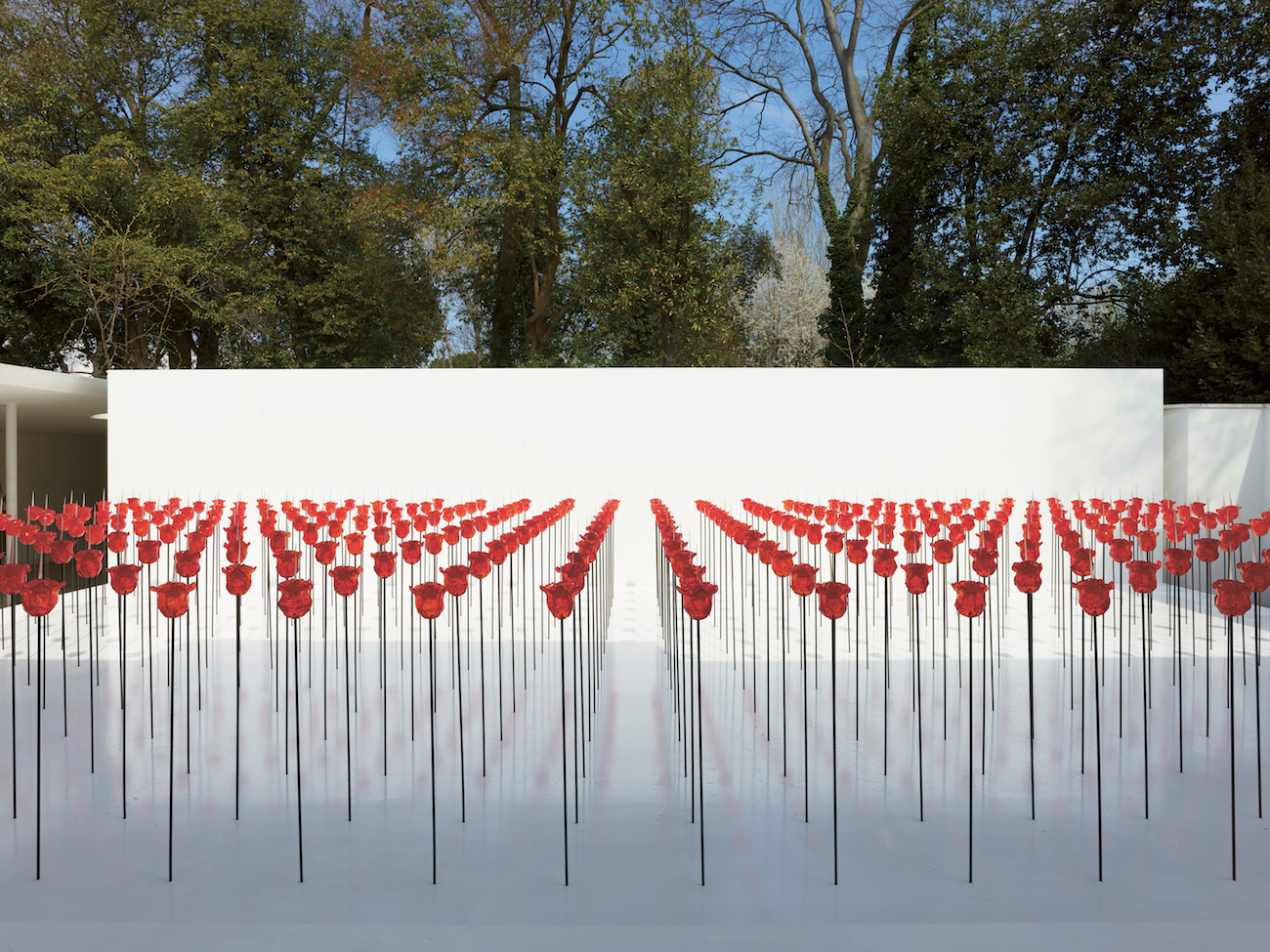
Renate Bertlmann, Discordo ergo sum, Austrian Pavillon, Biennale Arte 2019 – Photo Sophie Thun, Courtesy Renate Bertlmann & Richard Saltoun Gallery, London
In 2020, the Belvedere Museum in Vienna will be showcasing the work of Bertlmann as part of its CARLONE CONTEMPORARY series. For the exhibition, which began in February 2020 in the Upper Belvedere, the Austrian artist has developed a new version of her contribution to the Biennale. The red glass roses made at Berengo Studio open up beneath the Baroque ceilings in the Carlone Hall. Their fragile blossoms cling to a central point of violence, a sharp blade which protrudes from each flower head. The rich red of the glass points to a whole new pool of connotations under the ornate frescoed ceilings, from love and passion to violence and blood. The sensuality of the flowers when paired with their razor-sharp blades or “thorns” enhances the juxtapositions and dualities of the scenes depicted above them, it’s a revival of the original installation but also a transformation.

Exhibition view Renate Bertlmann – Photo Johannes Stoll, Courtesy Renate Bertlmann & Richard Saltoun Gallery, London
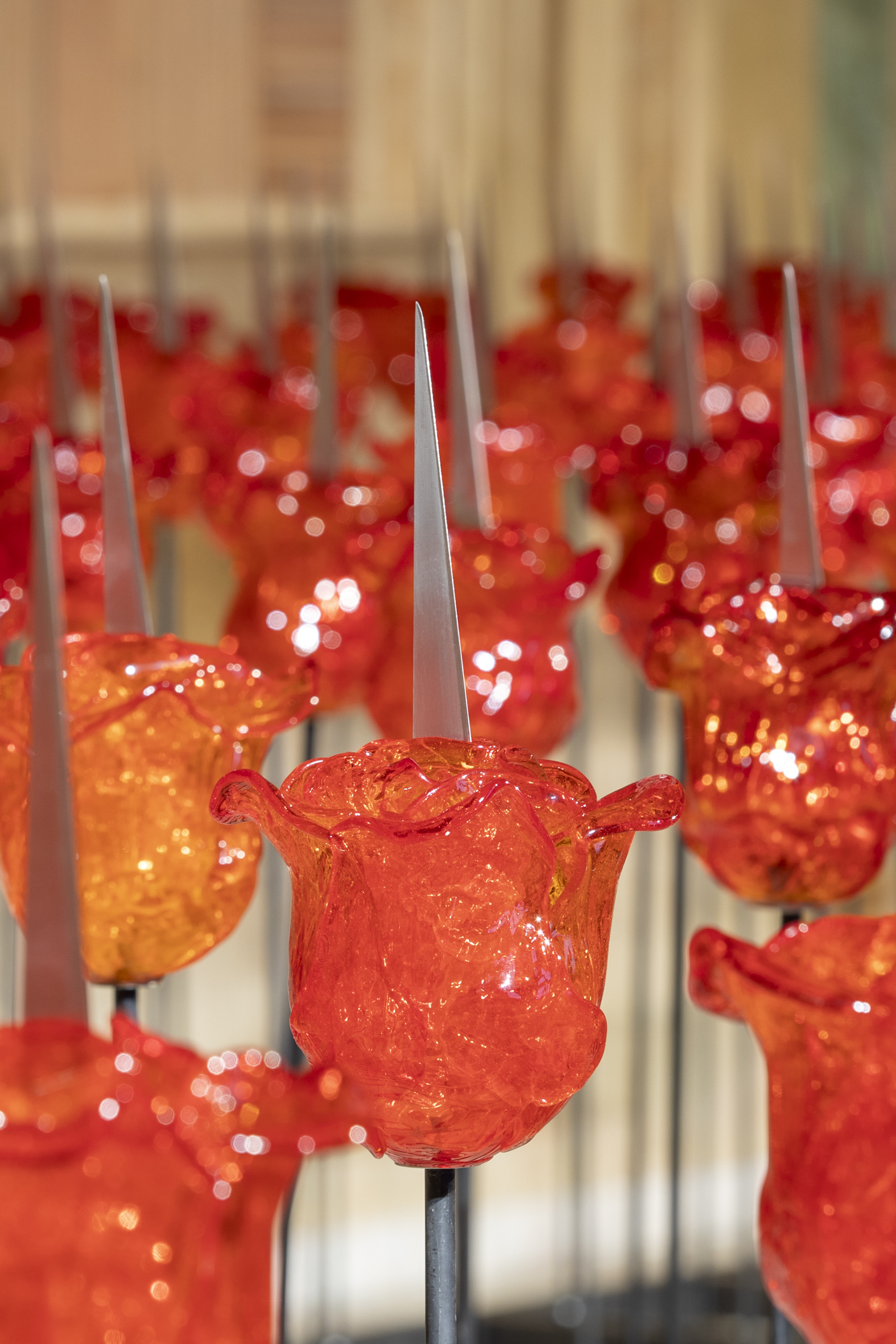
Exhibition view Renate Bertlmann – Photo Johannes Stoll, Courtesy Renate Bertlmann & Richard Saltoun Gallery, London
Born in Vienna in 1943, Renate Bertlmann studied at the Academy of Fine Arts in Oxford before returning to Austria to study at the Academy of Fine Arts in Vienna. Her work was deeply influenced by the feminist movement of the 1970s in which she was an active member as part of IntAkt (International Action Group of Women Artists) and to this day she continues to explore important social issues within her work. Her art practice ranges hugely and includes a variety of creative techniques and mediums, from film and photography to collage, performance, and sculpture. Now recognised as a key figure within the feminist avant-garde her work is shown worldwide and she has been the recipient of a number of important awards in recent years, from the Vienna Prize for Fine Arts in 2007 to the Great Austrian State Prize in 2017.
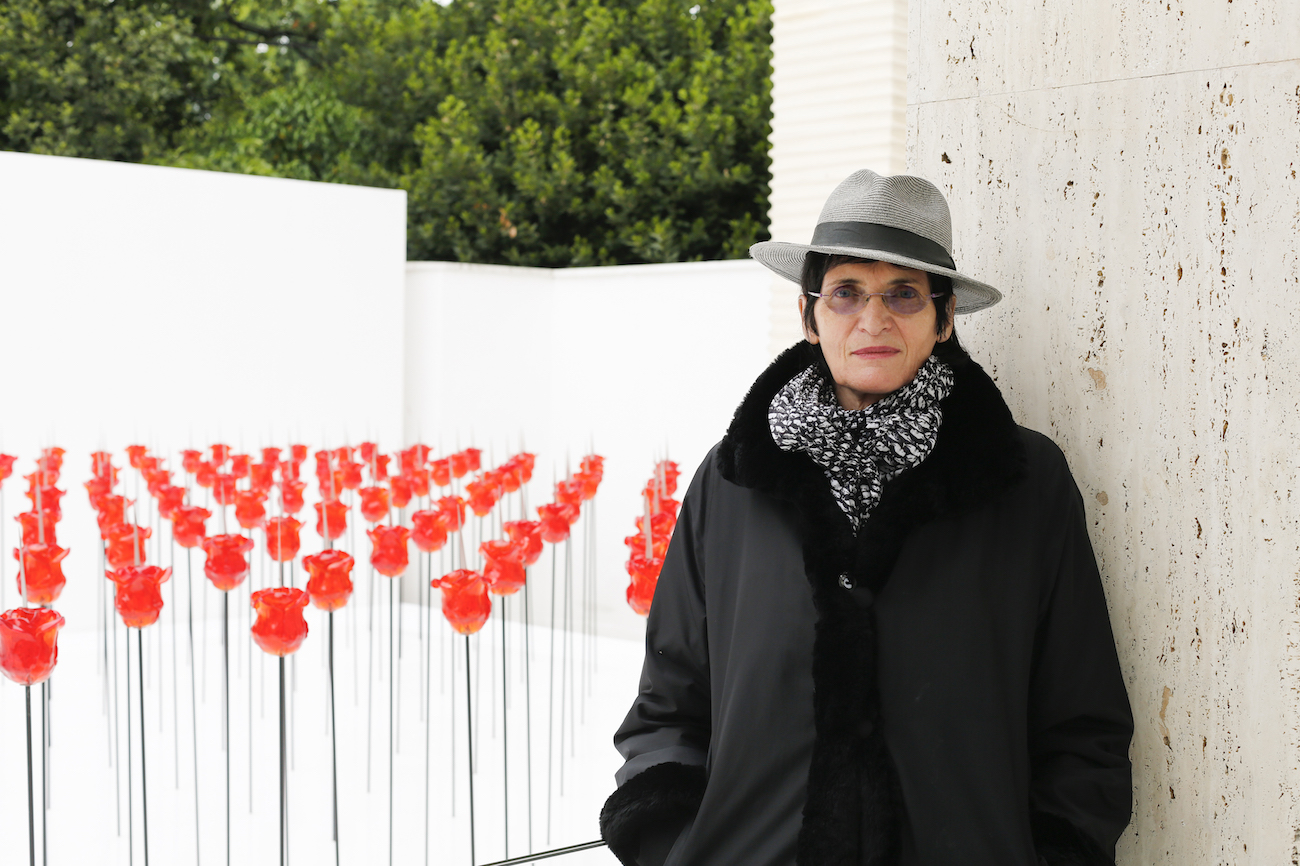
Renate Bertlmann, Photo Sophie Thun, Courtesy Renate Bertlmann & Richard Saltoun Gallery, London
This installation continues to move and challenge its audience through its striking contradictions. If you missed the opportunity to view Bertlmann’s pavilion at the Biennale don’t miss the chance to visit these glass sculptures as part of the Carlone Contemporary Series while you still can.
Find more about the exhibition at the Belvedere website.
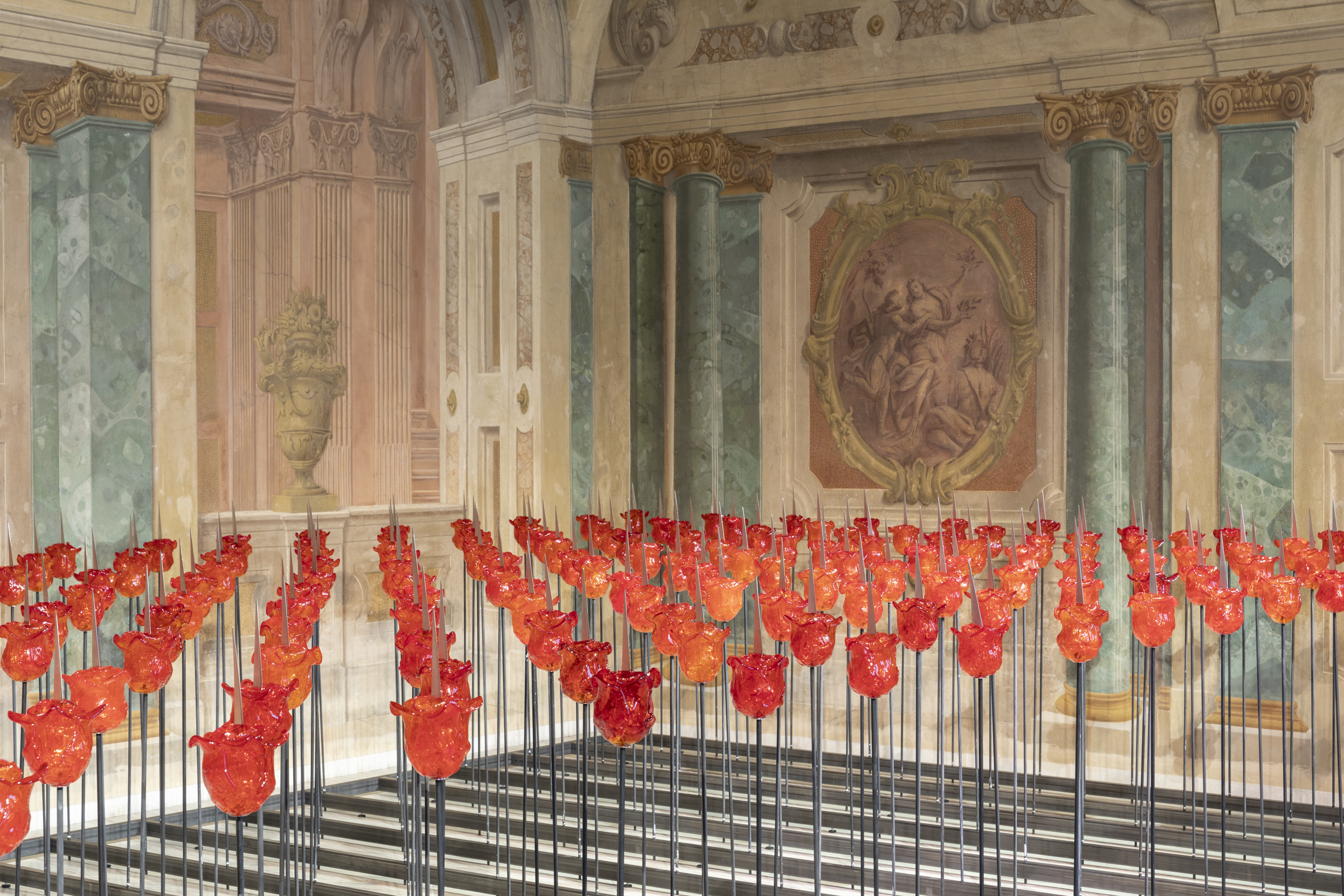
Exhibition view Renate Bertlmann – Photo Johannes Stoll, Courtesy Renate Bertlmann & Richard Saltoun Gallery, London

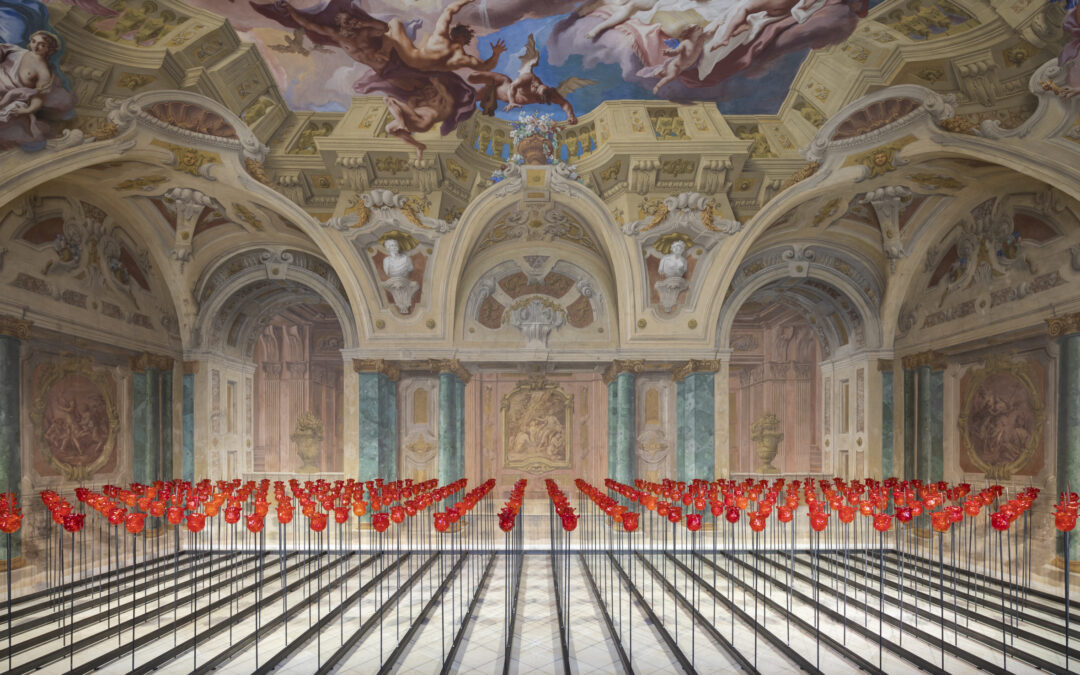
Recent Comments